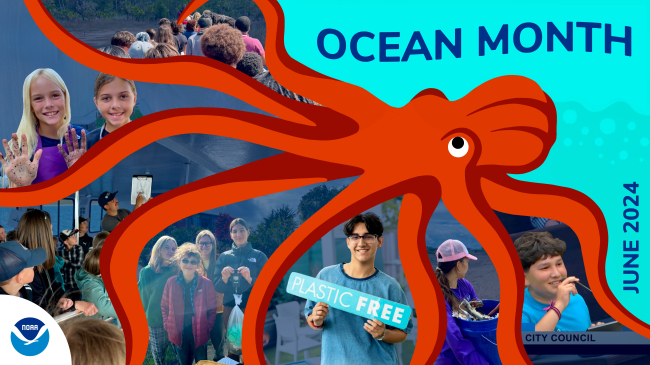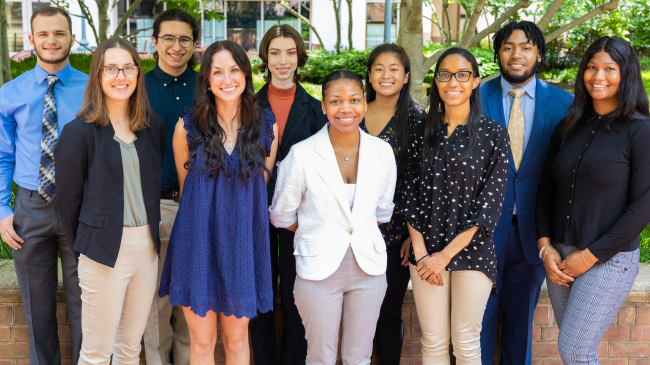Just a few more reasons to feel optimistic this Earth Day.
Earth Day is an opportunity for us to celebrate our blue planet and ask ourselves what we can do to conserve it for ourselves and future generations. In honor of Earth Day on April 22, 2018, here are ten short stories from education programs that have made positive, tangible changes in the environment. We see examples of young students taking the initiative to convince their school administrators to reduce waste, wounded veterans cleaning up waterways, volunteers of all ages taking action in their communities, and much more. We hope these stories give you another reason to smile as we celebrate this beautiful planet we call home.
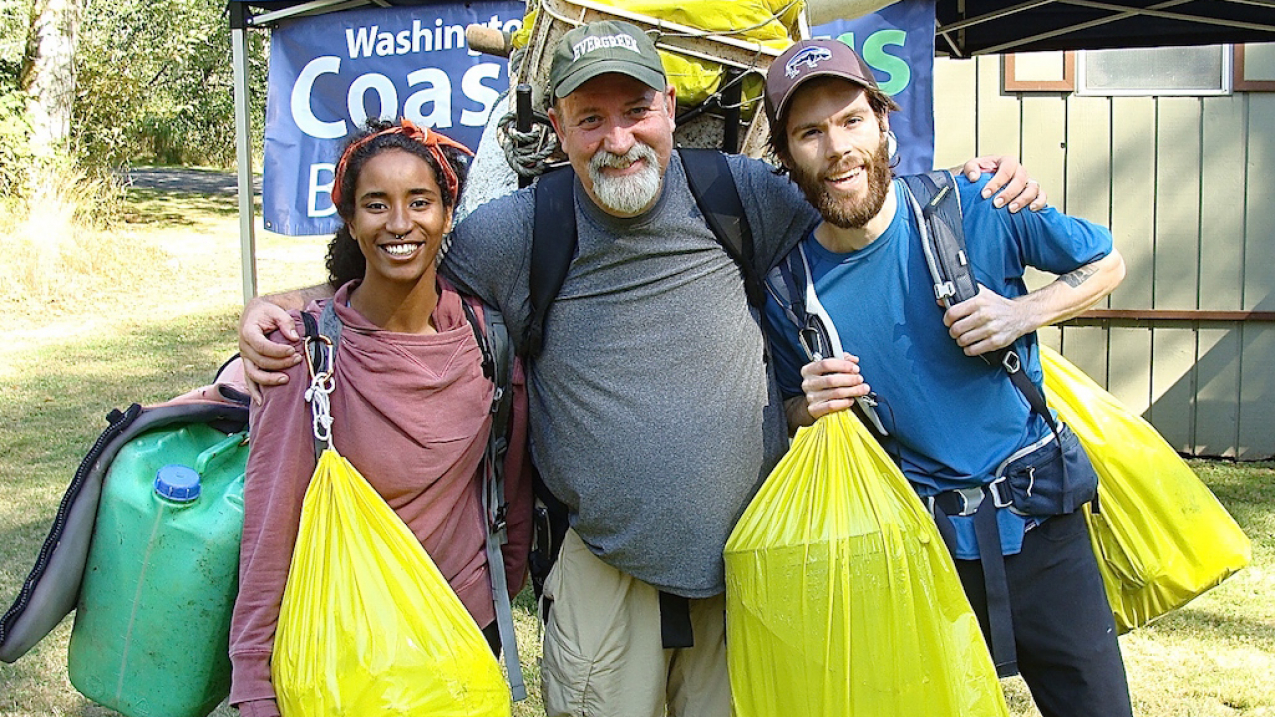
At the 2017 Washington Coast Cleanup, 1335 volunteers cleaned 1,000 acres of parks or public lands and removed 28,045 lbs of trash. (Image credit: Washington CoastSavers)
Washington Coast Cleanup volunteers remove trash from 1,000 acres of public lands
Olympic Coast National Marine Sanctuary, in partnership with Washington CoastSavers offsite link, is dedicated to keeping the state's beaches clean of marine debris through coordinated beach cleanups, education, and prevention. The annual Earth Day beach cleanup in April and International Coastal Cleanup in September focus on removing debris from Washington coast beaches. In 2017, 1,335 volunteers cleaned 1,000 acres of parks or public lands, removing 28,045 pounds of trash. These community volunteer efforts help preserve the beauty of ocean beaches, reduce the impacts of marine debris to wildlife, and make the shores safer and more enjoyable for recreation. The 2018 Washington Coast Cleanup will be held on April 21st. Online registration is open at http://www.coastsavers.org/ offsite link.
Hawaiian ‘stink pond’ gets some much needed T.L.C.
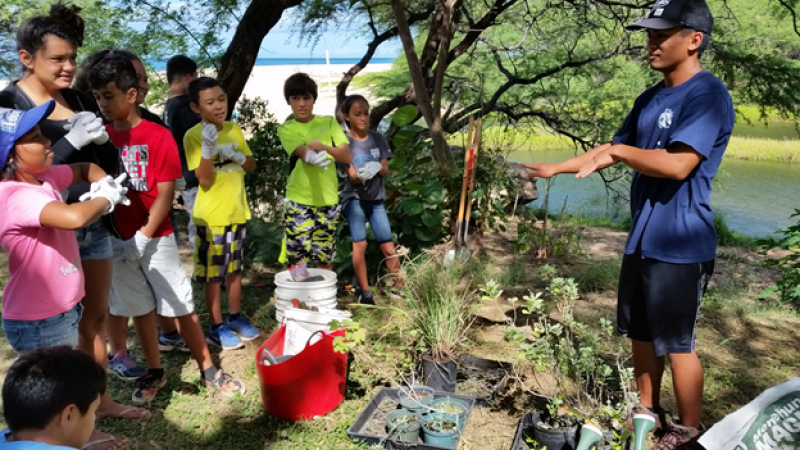
The Malama Learning Center project, “Promoting Place-based Education and Restoration of the Wetland and Watershed of Nanakuli,” received funding from the Hawaii Bay Watershed Education and Training (B-WET) program to work with local students to restore an estuary known only as ‘stink pond’ because of the murky water and litter in the wetland. Over 500 students, teachers, and community members volunteered their time and cleared one acre of invasive plants, planted 560 native plants, and removed large quantities of litter at the beach and in the surrounding watershed. Students also developed projects focused on restoring the site. On April 11, they presented their findings to the community as part of an annual Ho’ike (end of year celebration). The audience consisted of over 200 community members, a State House representative, and a state senator.
Great Lakes elementary students recycle 68,000 plastic bags, win Pennsylvania Governor’s Award
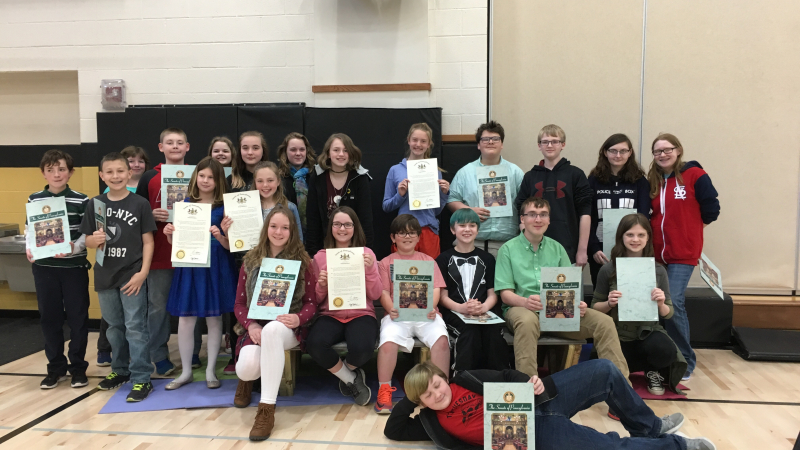
With help from Pennsylvania Sea Grant offsite link, students at Iroquois Elementary School in Erie, Pennsylvania, developed a recycling program that put a dent in the plastic bag problem and improved their Lake Erie community. After researching the consequences of plastic bags in the environment, students in fourth through sixth grade decided to embark on an outreach campaign to improve the recycling and reuse of plastic bags. Students discovered that the reason for the low rate of recycling plastic bags in their community was that, unlike other recyclables, plastic bags are not collected curbside; they must be taken to specific drop off locations, such as grocery stores. The students launched a recycling program at their school by installing recycling receptacles. In just two months, the entire school had recycled over 68,000 plastic bags, which were later converted into a park bench. As a result, Iroquois Elementary students were awarded the Governor’s Award for Environmental Excellence.
Ocean Guardian Schools reduce waste and restore habitat in their campuses and communities
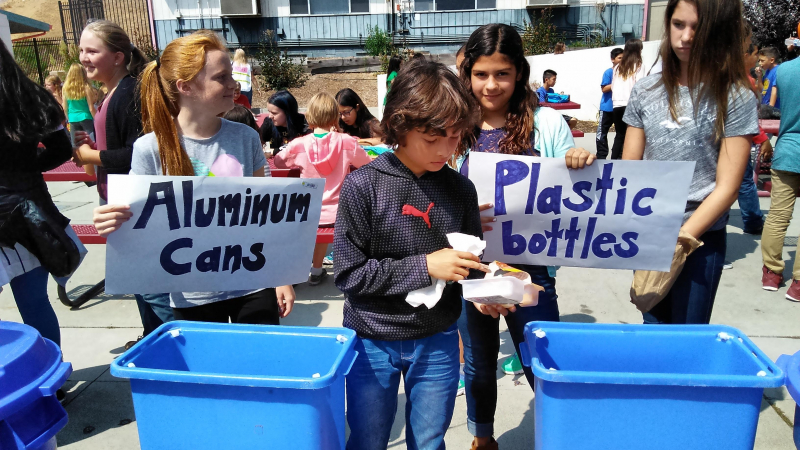
An Ocean Guardian School makes a commitment to the protection and conservation of its local watersheds, the world ocean, and special ocean areas, like national marine sanctuaries. The school makes this commitment by proposing and then implementing a school- or community-based conservation project. During the 2016–2017 school year, the 35 Ocean Guardian Schools installed 58 recycling bins and 27 compost bins, removed 1,115 pounds of trash and debris from campuses and communities, distributed 938 reusable bags and 3,273 reusable bottles, planted 592 native trees and 2,853 native plants, installed 16 wildlife habitat structures, held 65 bike to school days, and more offsite link! These projects give students opportunities to learn about the environment and participate in stewardship activities to make their school and local community a better place.
California students convince their school superintendent to nix styrofoam trays
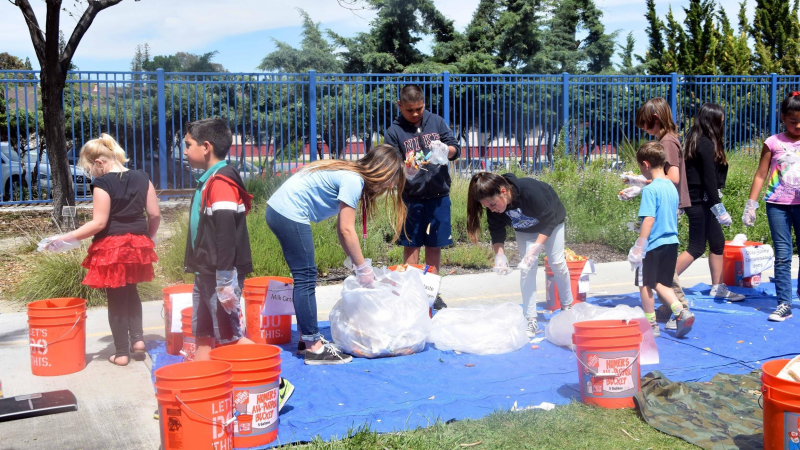
One Cool Earth offsite link, a nonprofit education program funded by the NOAA Marine Debris Program, worked with 15 elementary and middle schools in San Luis Obispo County, California, to raise awareness of waste. Schools reduced their waste and improved their campuses through recycling, daily lunchtime waste sorting, care for on-site worm compost systems, and by planting school gardens staffed almost entirely by students. In the spirit of adopting a zero-waste lifestyle, a group of 4th graders at Santa Margarita Elementary went one step further and convinced their superintendent to replace styrofoam trays with a recyclable alternative. The use of the new compostable trays became a district-wide mandate in 2017-2018. Fifteen schools diverted an average of 58% waste each from their landfills and saved schools up to $3,000 each annually in waste hauling costs. Any school can now become a Zero Waste school by following the Guide to Zero Waste offsite link created by One Cool Earth.
Alabama coastal restoration provides leadership training for youth and therapeutic recovery for wounded veterans
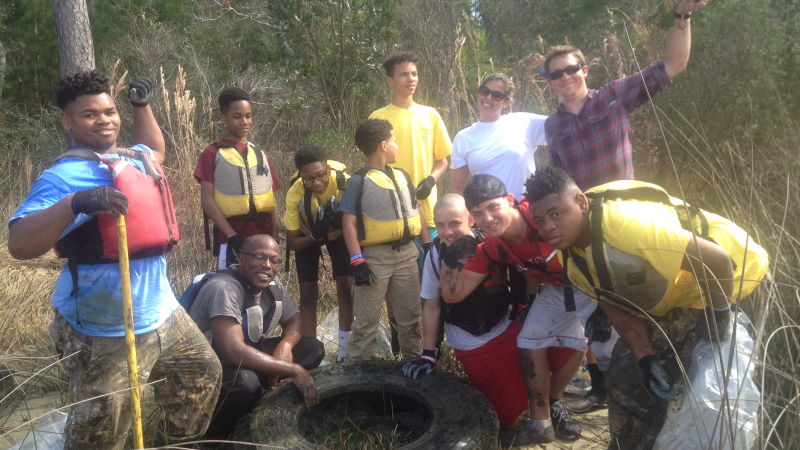
Erosion, sedimentation, and eutrophication from changing weather patterns are significant issues in Weeks Bay National Estuarine Research Reserve offsite link in Alabama. Weeks Bay Foundation Manager and NOAA Planet Steward, Yael Girard, implemented a program with funding from NOAA Planet Stewards to assess and restore areas of the waterway and remove trash to combat these issues. Fifty-eight people ages nine to 79, including students, educators, community members, and representatives from partner organizations, volunteered over 300 hours in total to the project. The participants included a group of veterans from Team River Runner, which serves wounded veterans and uses kayaking and canoeing as therapeutic activities. The participants also included members of Compass II Life, a program which helps young men from urban communities who have faced significant challenges to get back on track through leadership training and community service. The groups gathered hundreds of pounds of trash and recyclable materials, assessed three miles of the waterway, and planted 500 native plants that decrease erosion and increase filtration of minerals and nutrients going into Weeks Bay.
NOAA Teacher at Sea alumni make time to clean up coastlines during a workshop
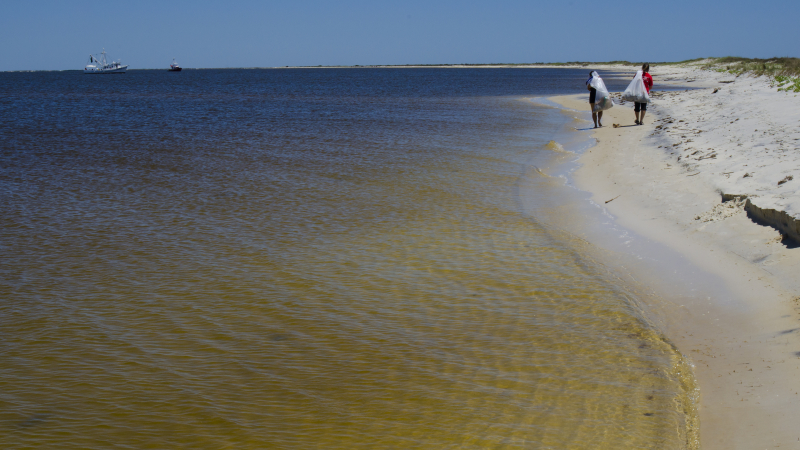
The NOAA Teacher at Sea program provides professional development for educators by bringing them out to sea on NOAA research vessels. But these experiences don’t end when the teachers return home. The Teacher at Sea Alumni Association encourages participants to share ideas and resources via regional workshops. In May, 2017, 17 alumni from nine Gulf Coast and Southeast states met at NOAA’s Southeast Fisheries Science Center Laboratory in Pascagoula, Mississippi. Local NOAA scientists taught the teachers about sea turtle, groundfish, and larval fish studies, and a shark biologist led the teachers in hands-on shark dissections. On the second day, the teachers participated in a trawling demonstration aboard NOAA Research Vessel Caretta and went ashore to clean up a nearby barrier island. They removed over ten large garbage bags of debris from Petit Bois Island. The teachers will bring these local field ecology lessons back to their classrooms, imparting their knowledge and excitement about the marine environment to multiple generations of students.
Volunteers restore Florida waterways after Hurricane Irma
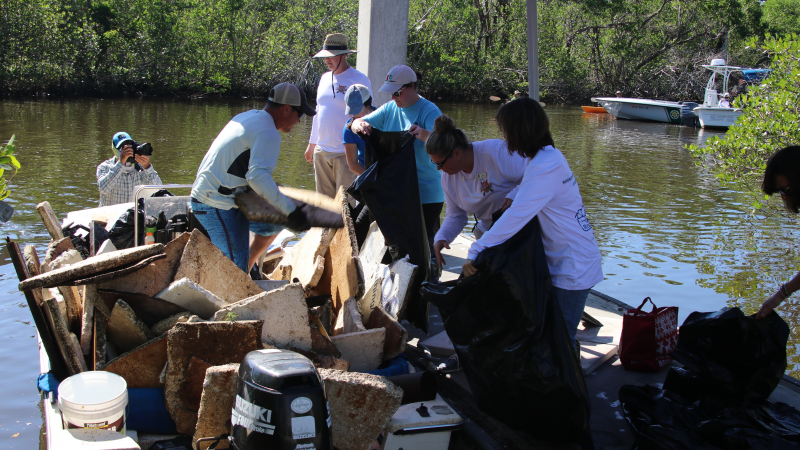
Hurricane Irma blew trash and debris into much of the coastal environment near Naples and Marco Island in Florida. Rookery Bay National Estuarine Research Reserve offsite link teamed up with Red Bull to host a Henderson Creek cleanup. Nearly 100 stand-up paddlers, kayakers and water enthusiasts from all over Florida joined forces to help remove and load more than sixty yards of debris into dumpsters, restoring the creek’s pristine beauty and making the shoreline safer for wildlife and recreation.
Homeschoolers remove invasive trees, restoring rare pitch pine forest in Rhode Island
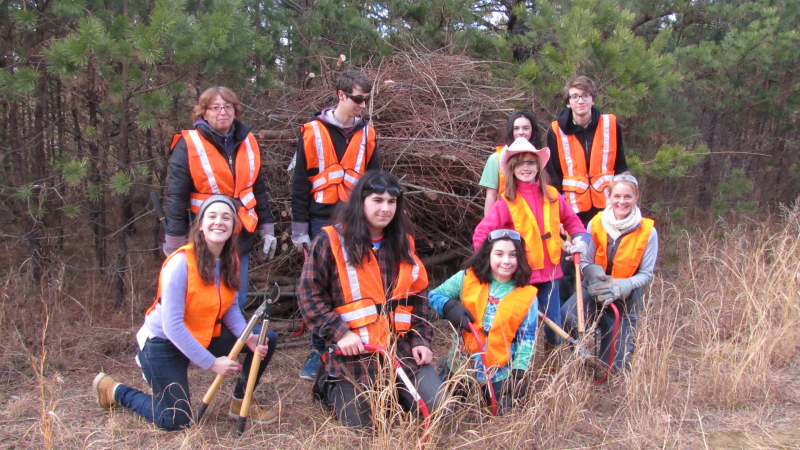
Earth Day isn’t just about planting trees; sometimes it’s about removing invasive species to restore native forests. Every month the Narragansett Bay National Estuarine Research Reserve offsite link hosts several groups of elementary- through high school-aged homeschooled students. Among those students are a group of teens that have been attending reserve programs for several years. What do they ask to do the most, sometimes for hours a day? Battle the invasive European larch trees with clippers, loppers, and hand saws! These industrious young adults, along with other volunteers, have removed 500 invasive trees from Rhode Island’s rare, native pitch pine forest. Despite the ever-present threat of thorns, ticks, and blisters, these students showed enthusiasm and dedication to the project, one they truly have made their own.
Planet Steward educator kicks off composting program at Georgia school
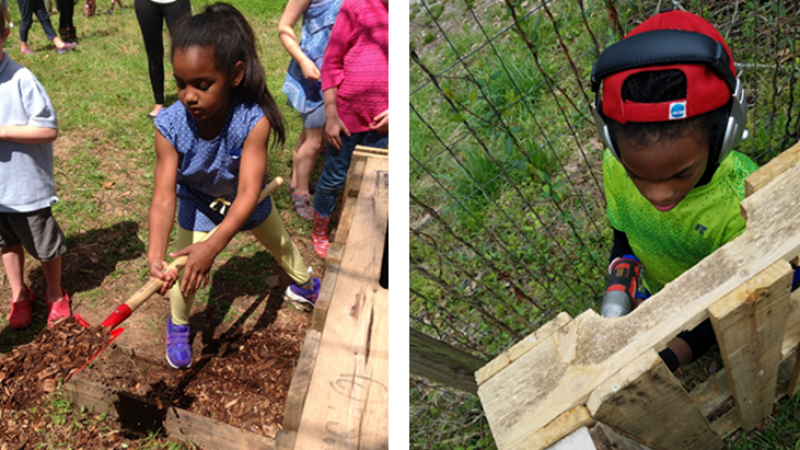
Students at a Georgia Montessori school helped offset carbon emissions through a project funded by NOAA Planet Stewards. Teacher Seri Beall worked with 22 students to increase their knowledge of the local carbon cycle and help them put that knowledge into action through two carbon sequestration projects. First, students designed and built two compost stalls to turn their lunch food scraps and trash compost back into soil. By the end of the project, the school was sending 95% of the compostable waste to the compost pile (up from 0%) and returning a significant amount of carbon to the soil. In the second part of the project, the students grew 100 white oak trees from acorns and distributed and planted all of them. Each tree is now sequestering a little over one pound of carbon per year. In total, the students and educators spent 109 hours engaged in stewardship activities.
These are just a handful of NOAA’s education programs that partner with communities and walk the walk when it comes to environmental stewardship. If you’re inspired to get involved and start taking action, check out our opportunities for students, educators, and volunteers. You can also save the date for the International Coastal Cleanup offsite link on September 15, 2018.



